3.7 Providing Access
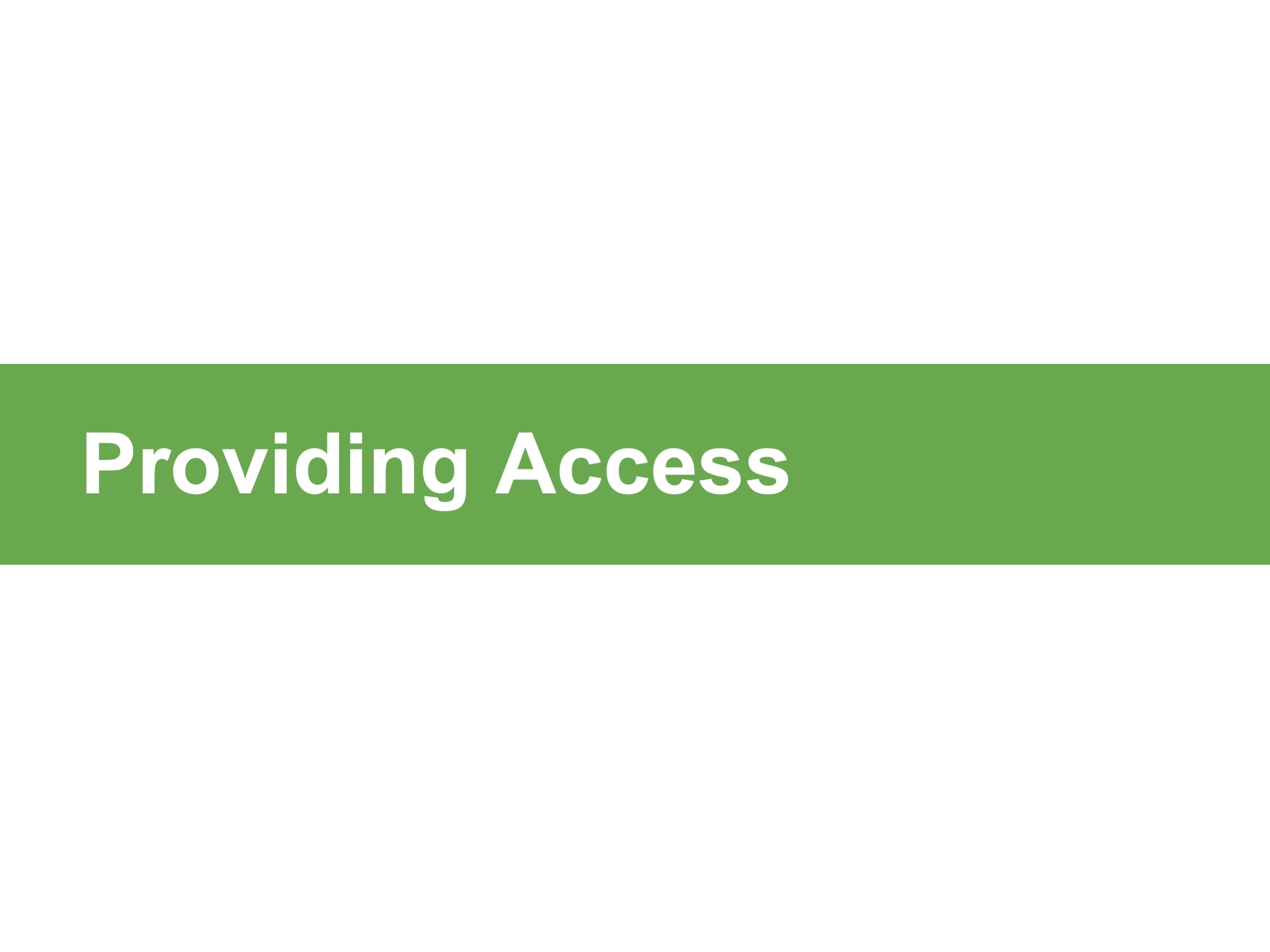
Providing access to data:
where to provide access to data
how to provide meaningful access to data by making it well documented and well indexed. That means people will be able to find it access it use it for their research purpose because they understand it
3.7.2 Data Sharing Challenges
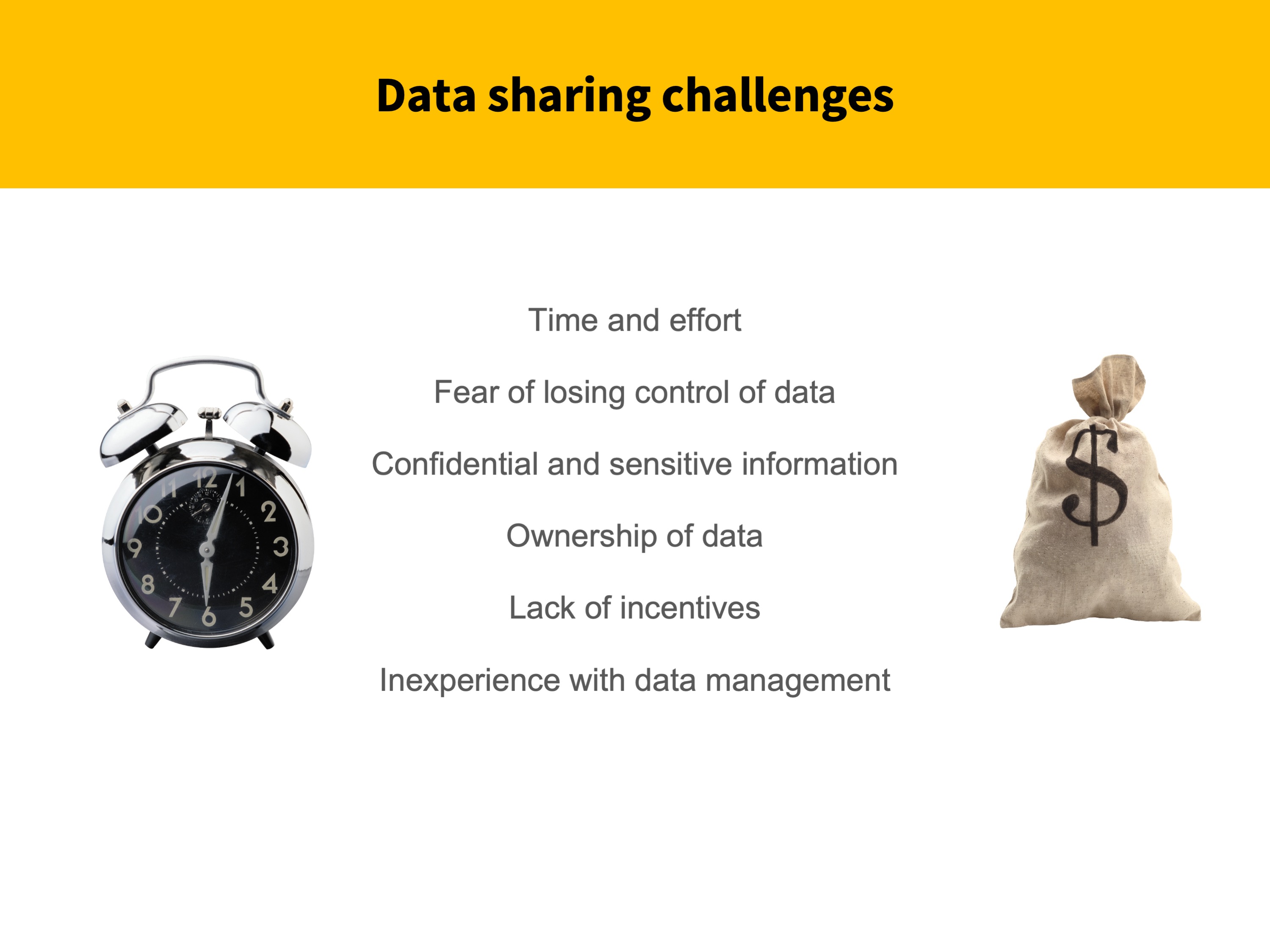
Sharing data involves some very real and complicated challenges. Some commonly voiced concerns are…
Time and effort required to make data shareable.
Perceived risks that many researchers have of losing control of their data. (getting scooped, having data scruitinzed, used in a way that you didn’t intend)
A need to protect confidential or sensitive information (such as patient data)
Lack of clarity over who owns the data (The university? The funder?)
Lack of incentives for sharing data.
Academia rewards researchers for publishing articles but not for making data available. However, that is changing.
Sometimes you might not be able to share data (difficult to de-identify PHI data). Sometimes there might not be value in sharing data.
3.7.3 Providing Access to Data
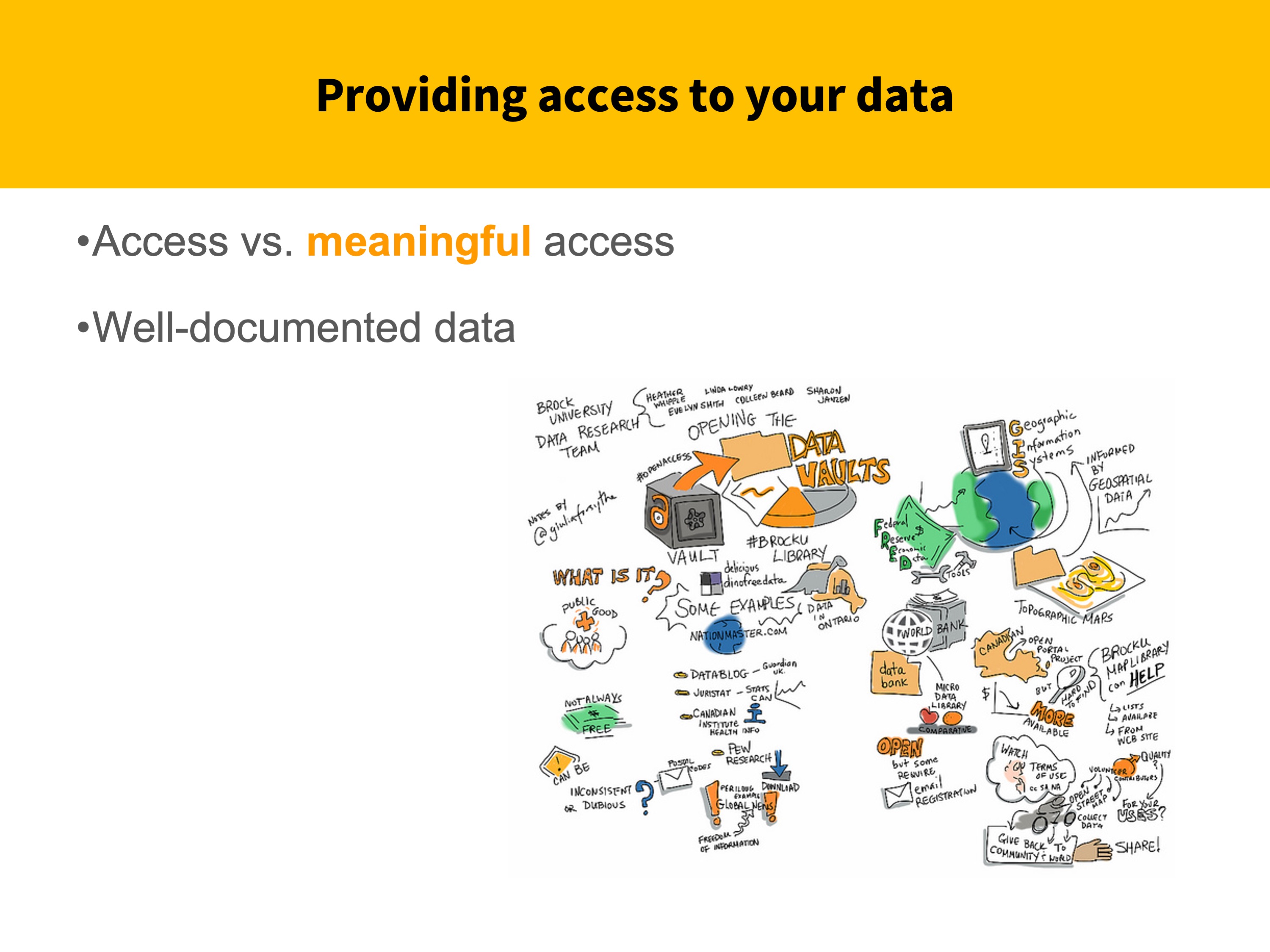
It is important to make the distinction between providing access to data (like sharing a link to a folder on your one drive with your data in it) and providing meaningful access.
You can provide access to data, but it if isn’t well-documented it will be unusable and not very meaningful.
3.7.4 Data Repositories
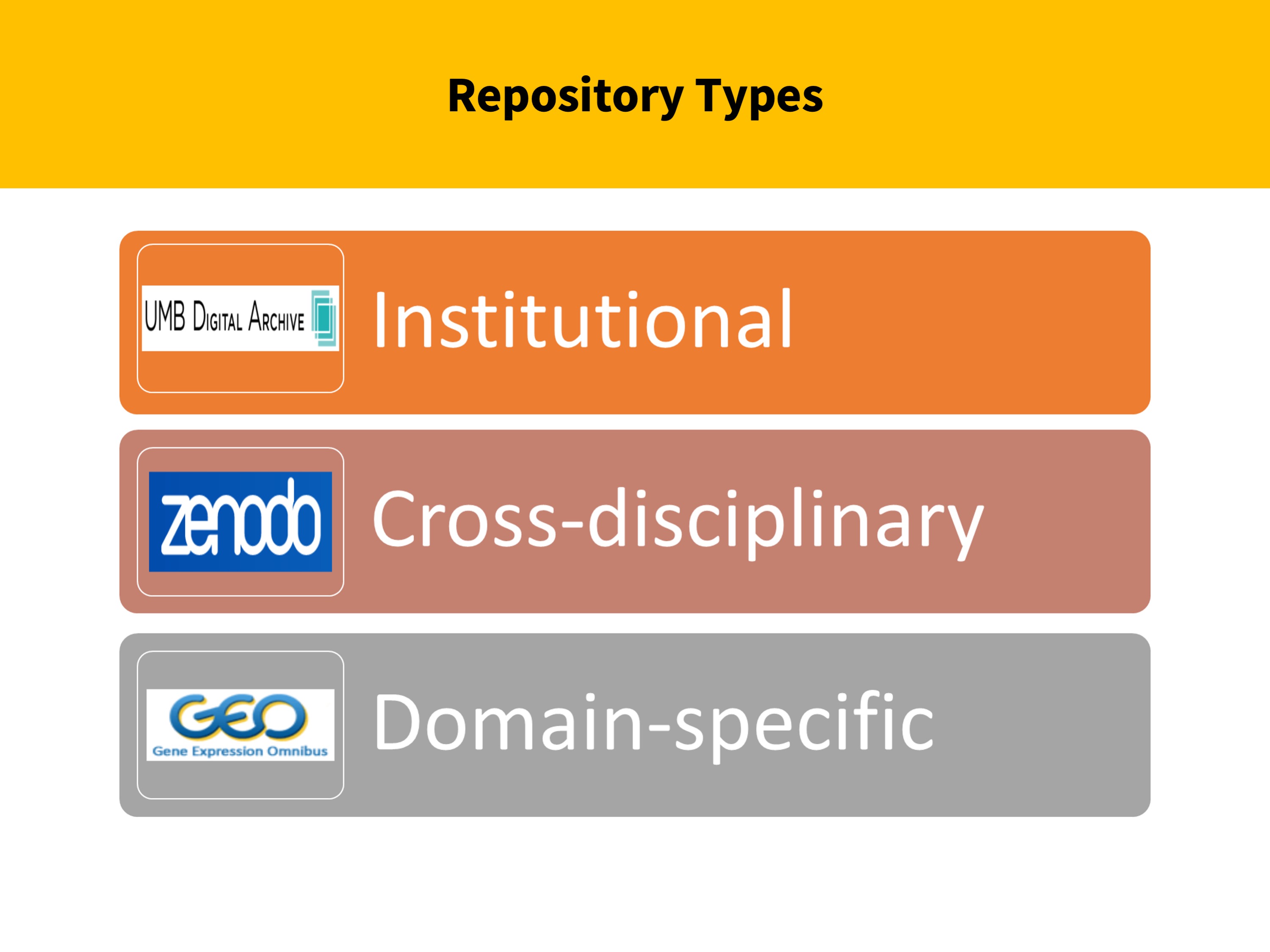
One step towards providing meaningful access to your data is to deposit it in a repository.
A data repository can be defined as a place that holds data, makes data available to use, and organizes data in a logical manner. Data repositories may have specific requirements concerning subject or research domain; data re-use and access; file format and data structure; and the types of metadata that can be used.
There are generally three types to consider.
Institutional store data created by the institution’s researchers. UMB’s institutional repository, the Digital Archive, aims to capture the historical record of the university, but does not at this time collect datasets.
Domain-specific repositories hold data within a specific subject domain. An example of this is NCBI’s Gene Expression Omnibus. NIH maintains a list of 65 domain-specific repositories.
Cross-disciplinary repositories hold data from across many disciplines. Some popular cross-disciplinary repositories include Zenodo, Dryad, and Open Science Framework. NIH also maintains an instance of the cross-disciplinary NIH-Figshare, for NIH-funded data that does not fit in one of their domain-specific repositories.
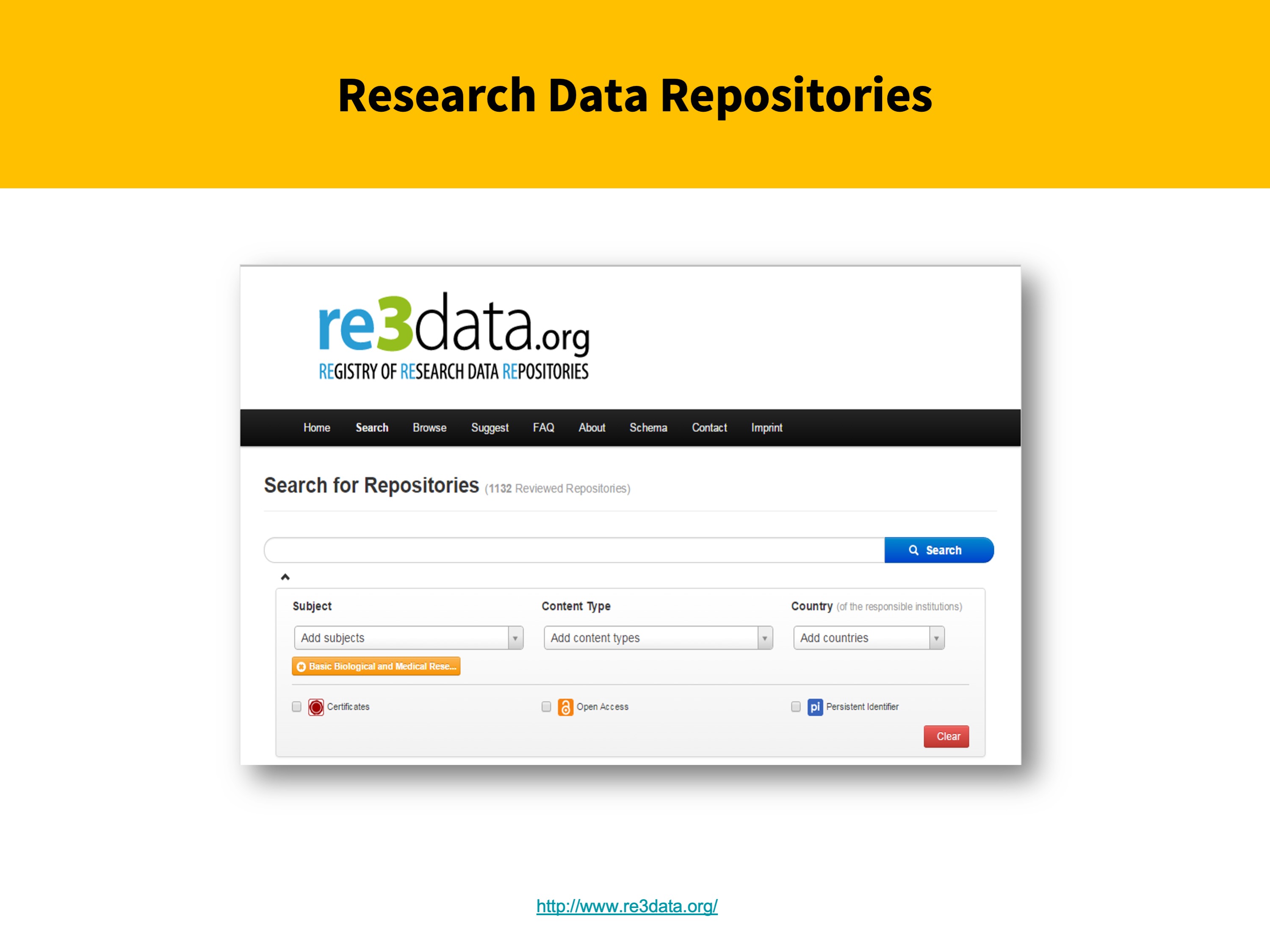
Many more repositories can be found at re3data, which list thousands of repositories across a wide array of subject domains.
The search allows you to drill down by specific disciplines to identify relevant repositories, so may be a useful place to identify a discipline-specific repository for sharing.
3.7.5 UMB Data Catalog
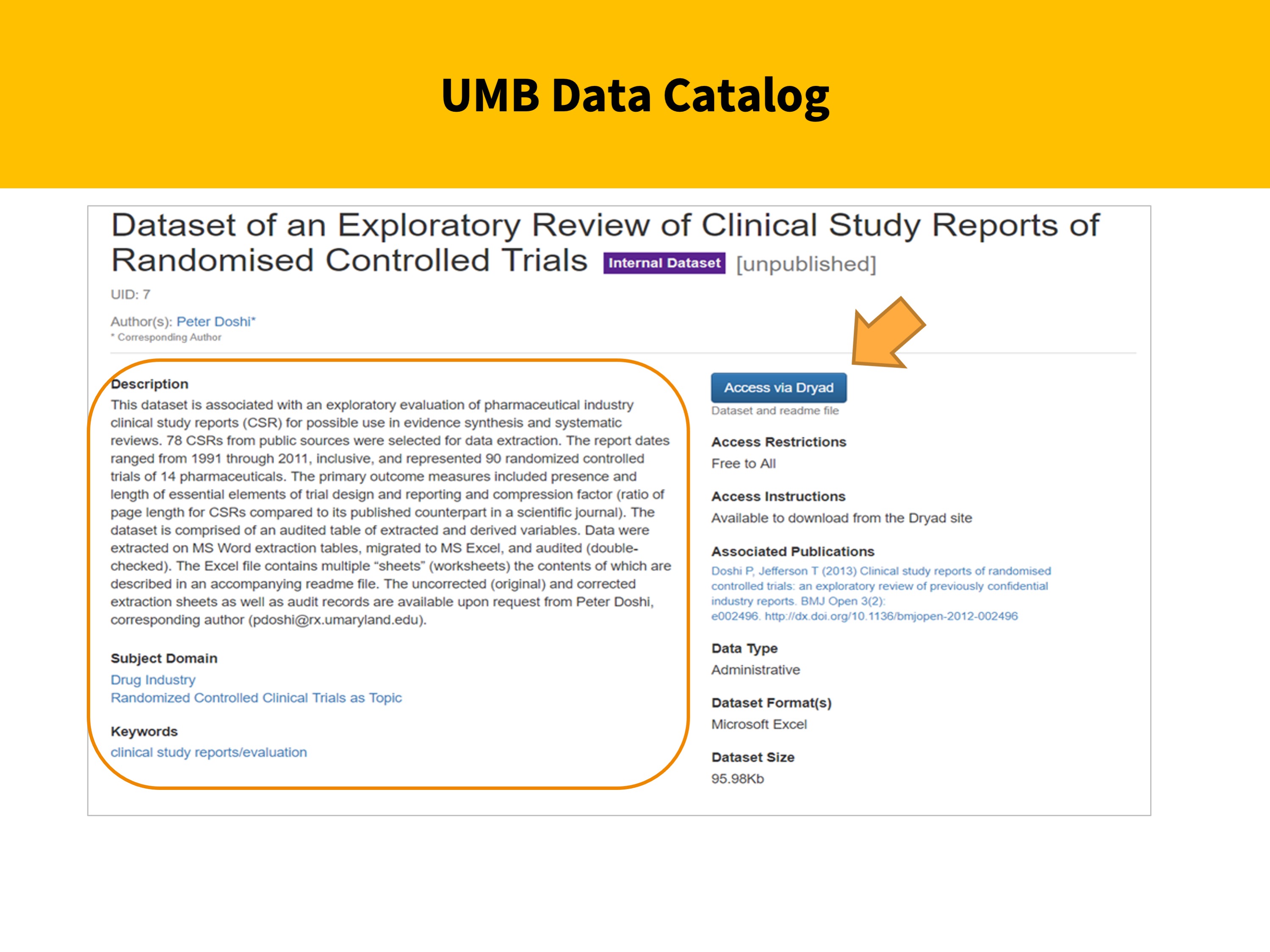
We talked about meaningful access to data. Having a record in our data catalog describing data you have shared is a great way to make the access to your data more meaningful.
First, this is NOT a repository. Datasets are not stored here; only information about the dataset is included
Instead, it is: A catalog to facilitate the discovery of datasets created by UMB researchers
Benefits:
Locate secondary data sources for research
Opportunity for data re-use and collaboration
You can use the link to your dataset record in articles, CVs, etc.
Increase research visibility of your research on campus and beyond
In this example, Peter Doshi’s data has been described and a link is provided to the data in the Dryad open archive
3.7.6 Data Publishing
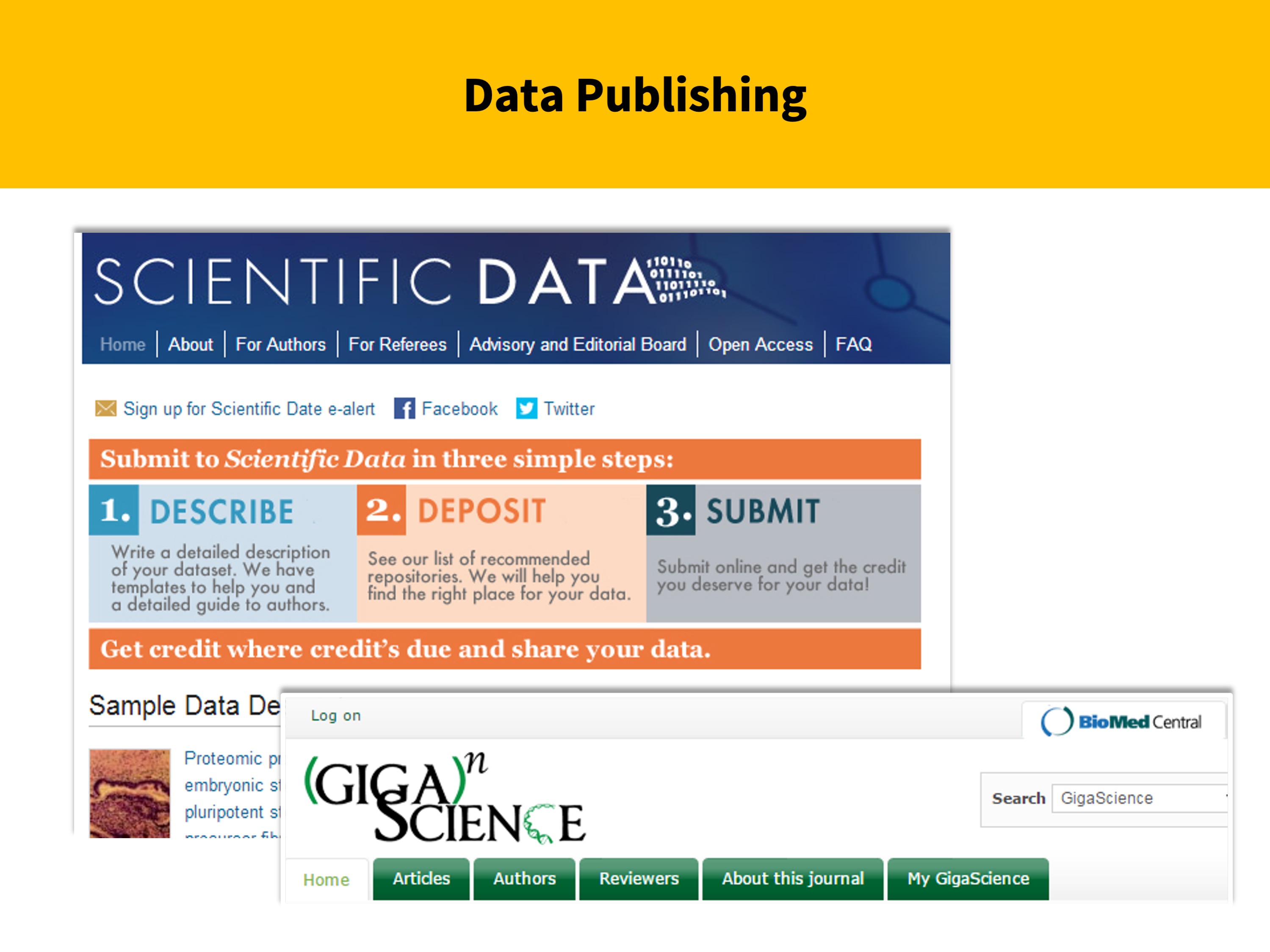
Another way to provide access to data is through a data publication.
In the past few years there have been an increasing number of data journals. In these journals, the data itself is described rather than providing analysis and results.
